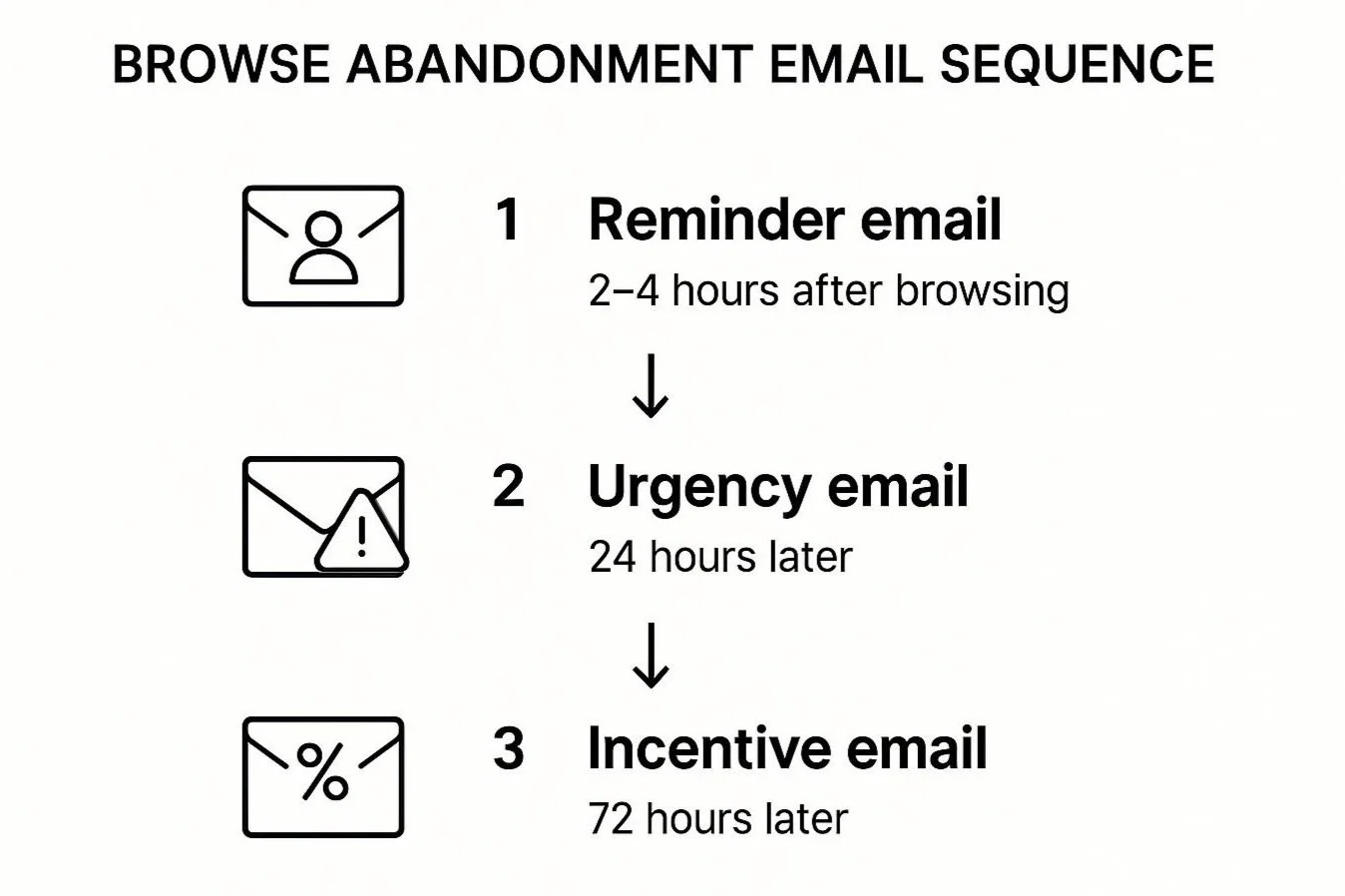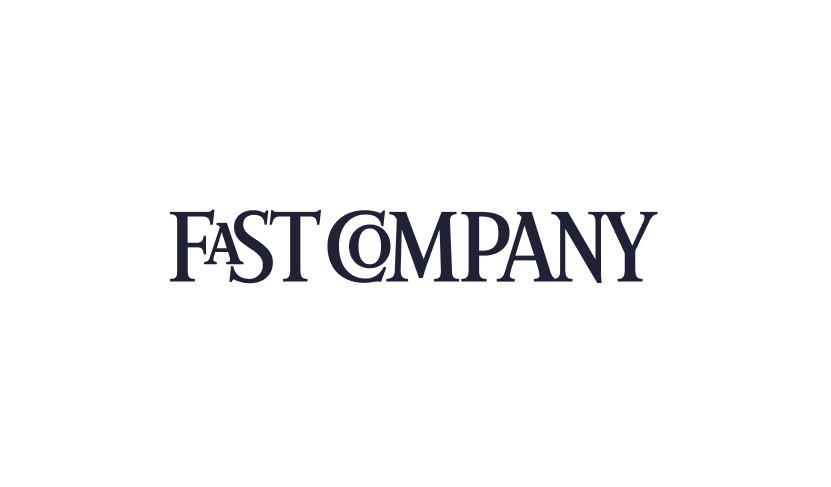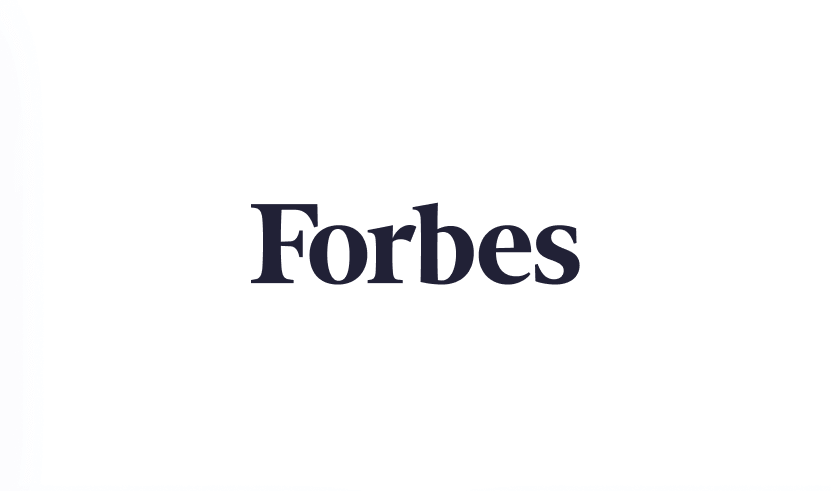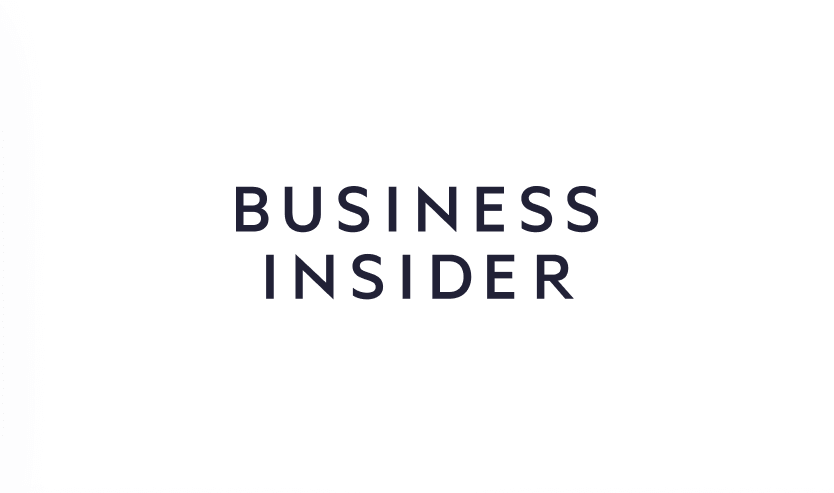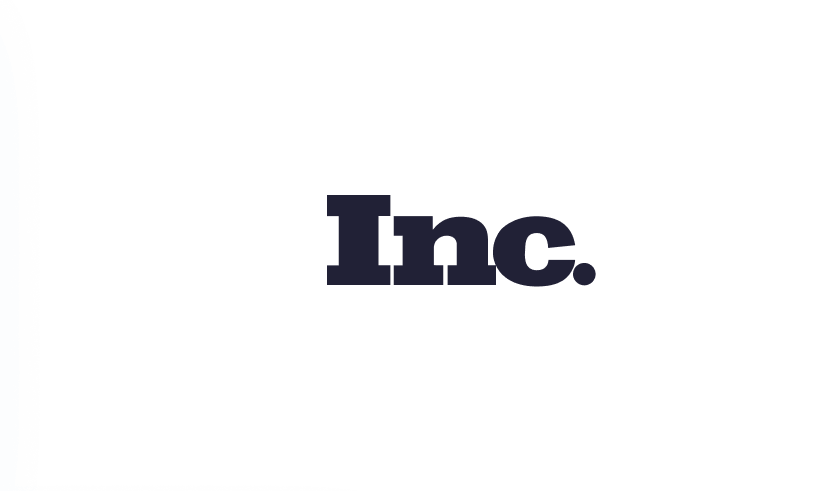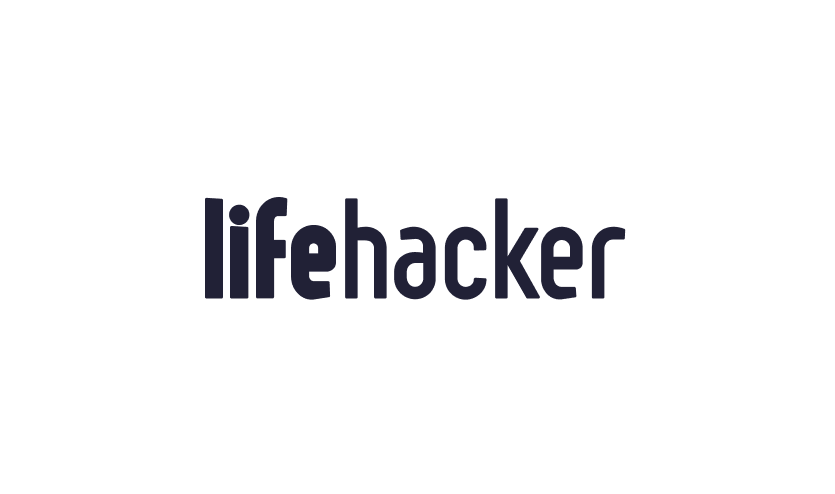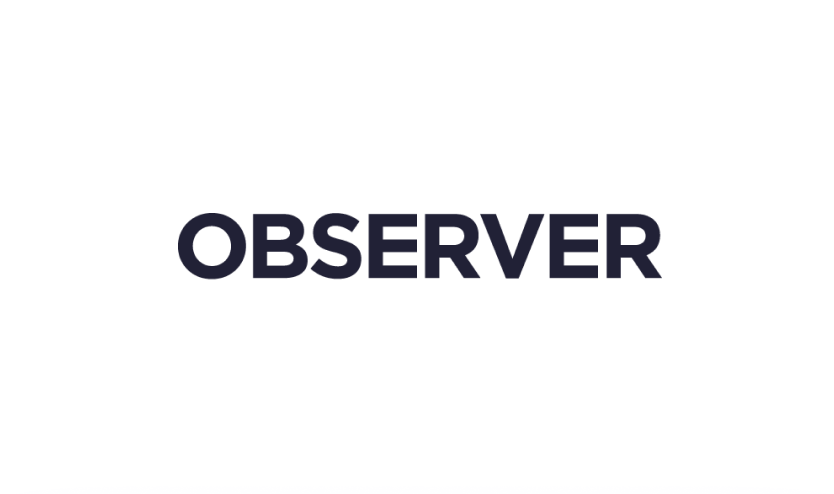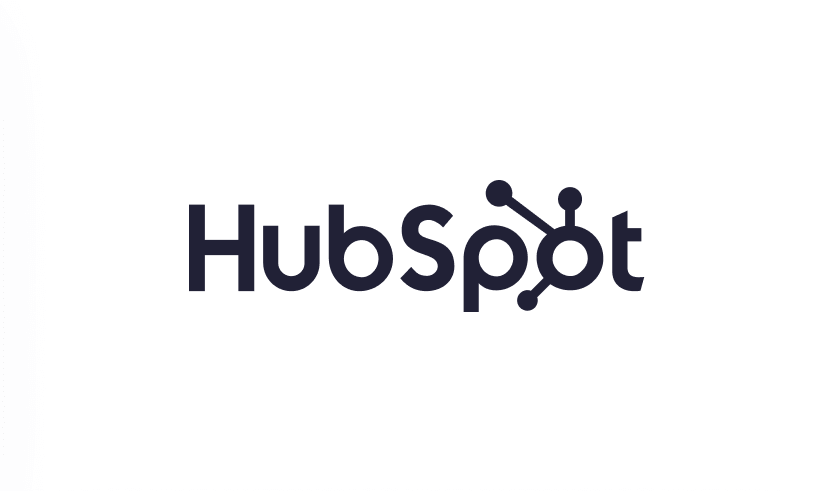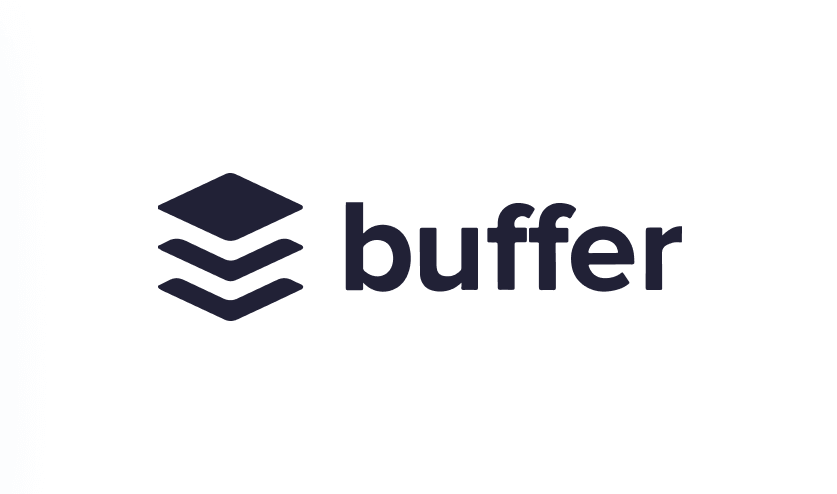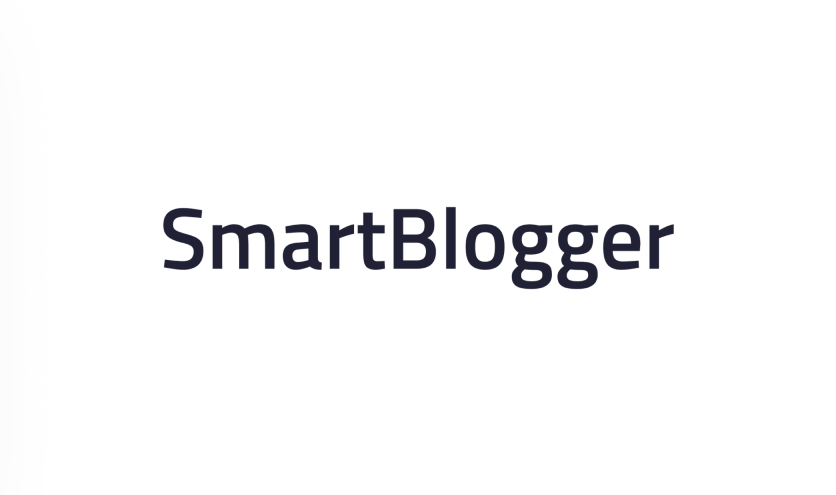Browse Abandonment Email Examples to Boost Conversions
Stop Leaving Money on the Table: Recapture Lost Sales with Browse Abandonment Emails
Discover seven effective browse abandonment email examples to recover lost sales and boost your revenue. This listicle provides proven strategies, from simple product reminders to incentive-based offers and multi-touch campaigns, to re-engage shoppers who left items in their cart. Learn how personalized recommendations, scarcity tactics, social proof, and educational content can be used in browse abandonment emails to convert browsers into buyers. We'll cover examples such as simple reminders, scarcity-driven emails, personalized product recommendations, incentive offers, educational content, social proof, and multi-touch sequences.
1. Simple Reminder with Product Showcase
One of the most effective browse abandonment email examples is the "Simple Reminder with Product Showcase." This straightforward approach leverages the power of visual cues by displaying the exact products a customer viewed, gently nudging them back towards completing their purchase. It capitalizes on recent browsing history, creating a direct connection between the email and the customer's immediate needs and desires. This method prioritizes a product-centric message, keeping the email clean and concise without overwhelming the recipient with excessive marketing fluff. It's a subtle reminder, not a hard sell. This makes it particularly effective for customers who were genuinely interested in the product but got distracted or simply needed more time to decide.
This browse abandonment email example thrives on its simplicity. Key features include a clean product grid displaying the viewed items, clear product images accompanied by pricing, and simple call-to-actions (CTAs) like "Continue Shopping" or "View Product." The copy is minimal, focusing on the products themselves and letting their visual appeal do the talking. Crucially, these emails are designed with mobile responsiveness in mind, ensuring a seamless experience across all devices. This is vital in today's mobile-first world, where a significant portion of online browsing and shopping happens on smartphones and tablets.
The strength of the Simple Reminder with Product Showcase lies in its high recognition factor. Customers instantly recognize the products they were browsing, reducing the cognitive load required to process the email. This ease of recognition contributes to higher click-through rates. Furthermore, this type of email is easy to implement and customize, making it a practical choice for businesses of all sizes. Its versatility allows it to work well across a wide range of industries, from fashion and electronics to home goods and beauty products. You can Learn more about Simple Reminder with Product Showcase and how it contributes to a winning email strategy.
While this approach offers several advantages, it's essential to acknowledge its limitations. The simplicity that makes it effective can also be its downfall. These emails may lack an emotional connection with the customer, relying primarily on visual recognition rather than persuasive storytelling. They also offer limited incentive to act immediately, as they typically don't include urgency-driving elements like limited-time discounts or promotions.
Despite these drawbacks, the Simple Reminder with Product Showcase remains a powerful tool in the fight against browse abandonment. Examples of successful implementations include Amazon's "Items you viewed" emails, Target's browse abandonment campaigns, and Best Buy's product reminder emails. These industry giants have demonstrated the effectiveness of this strategy in re-engaging potential customers and driving conversions. Their success serves as a testament to the power of simple, visually-driven reminders.
To maximize the impact of your Simple Reminder with Product Showcase emails, consider these actionable tips: send the email within 2-4 hours of the browsing session to capitalize on the recency effect; include no more than 4-6 products to avoid overwhelming the recipient; use high-quality product images to showcase your offerings in the best possible light; incorporate star ratings or customer reviews if available to build trust and social proof; and A/B test different subject lines like “Still thinking about these items?” or “Don't forget what you left behind!” to optimize open rates.
This browse abandonment email example deserves its place on this list due to its proven effectiveness, ease of implementation, and broad applicability. While other, more complex strategies may offer higher conversion rates in specific scenarios, the Simple Reminder with Product Showcase provides a reliable foundation for recovering lost sales and re-engaging potential customers across a wide range of industries. Its simplicity, combined with its direct visual appeal, makes it a valuable tool for any e-commerce business looking to boost its bottom line.
2. Scarcity and Urgency Driven
Scarcity and urgency-driven browse abandonment emails are a powerful tool in the email marketer's arsenal. This tactic leverages fundamental psychological principles – our inherent aversion to missing out (FOMO) and the perceived increase in value associated with limited availability. By highlighting scarce items, limited-time offers, or dwindling stock levels, these emails create a sense of urgency, nudging potential customers to complete their purchase before it's too late. This strategy goes beyond simply reminding customers about items left in their cart; it actively motivates them to act quickly.
This approach works by tapping into the psychological principle of reactance. When we perceive our freedom of choice is being restricted, we tend to react by wanting the restricted item even more. This is amplified by the fear of missing out. Seeing "Only 2 left!" or a ticking countdown timer triggers a sense of immediacy, prompting a quicker purchasing decision than a standard reminder email might achieve. The combination of product display alongside these compelling urgency messages makes these emails highly effective.
Several features contribute to the success of scarcity and urgency-driven emails. Clear stock level indicators like "Only 3 left!" or "Selling fast!" immediately convey scarcity. Time-limited offers with countdown timers visually reinforce the urgency. The language used in both the subject line and email body plays a crucial role – employing phrases like "Don't miss out," "Last chance," or "Limited-time offer" adds to the overall sense of urgency. Adding social proof elements like "10 people are viewing this item" or "5 people have recently purchased this" can further amplify the persuasive effect. Finally, a bold and attention-grabbing design helps these emails stand out in a crowded inbox.
Consider Booking.com's effective use of this tactic with their "Only 2 rooms left at this price!" emails. These messages create a powerful sense of urgency, prompting users to book immediately. Similarly, fashion retailers frequently use flash sale messaging with countdown timers to drive sales, and travel sites offer limited-time deals on flights and hotels to encourage quick bookings. These examples demonstrate the versatility and effectiveness of this approach across different industries.
The benefits of scarcity and urgency-driven emails are numerous. They generate immediate motivation to act, leading to higher conversion rates compared to standard browse abandonment emails. They are particularly effective for price-sensitive customers who are more likely to be swayed by a time-limited discount or deal. By creating a sense of urgency, these emails can drive quick purchasing decisions, shortening the sales cycle.
However, there are potential drawbacks to consider. Overusing this tactic can damage trust and credibility. Customers might become skeptical of the urgency claims if they see them too often. The approach can also appear pushy or manipulative if not implemented carefully. Furthermore, it requires access to accurate and real-time inventory data to avoid misleading customers. Finally, there’s a risk of training customers to wait for urgency emails, anticipating discounts or deals before making a purchase.
To effectively use this tactic, ensure all urgency claims are truthful and based on real-time inventory data. A/B test urgency messaging against non-urgency messaging to understand what resonates best with your audience. Always include clear expiration dates for any time-limited offers. Most importantly, strive for a balance between urgency and your brand voice. The urgency messaging should feel natural and integrated with your overall brand identity, not forced or disingenuous.
By understanding the psychology behind scarcity and urgency, leveraging its key features responsibly, and being mindful of the potential downsides, e-commerce businesses can harness the power of this technique to significantly boost their conversion rates and recover lost sales from abandoned browsing sessions. This strategy's effectiveness, combined with its adaptability across various industries, solidifies its position as a vital tool for any serious email marketer.
3. Personalized Recommendations
Personalized recommendations represent the cutting edge of browse abandonment email examples. This strategy goes beyond simply reminding customers about the products they viewed. Instead, it leverages the power of data and AI to suggest other items they might be interested in, based on their browsing behavior, purchase history, and the patterns of similar customers. This approach creates a curated shopping experience, transforming a simple reminder email into a personalized storefront. It's a powerful tactic for combating browse abandonment and boosting sales.
How Personalized Recommendations Work:
At its core, this approach uses data to predict what a customer might want next. This involves analyzing various data points, including:
Browsing History: Products viewed, categories explored, and time spent on specific pages.
Purchase History: Past purchases, including frequency, product categories, and price points.
Similar Customer Patterns: Leveraging data from other customers with similar browsing and purchase behaviors to predict preferences.
This data is fed into algorithms (often AI-driven) that generate product recommendations tailored to each individual customer. The recommendations are then dynamically inserted into the browse abandonment email, creating a unique experience for every recipient.
Examples of Successful Implementation:
Several companies have effectively used personalized recommendations in their email marketing strategies. Here are a few examples:
Netflix: Their recommendation engine is renowned for suggesting content based on viewing history and user preferences. This approach is easily adaptable to retail browse abandonment emails.
Spotify: Similar to Netflix, Spotify uses listening history and genre preferences to recommend new music. This model can be applied to retail by recommending products based on browsing categories and past purchases.
Fashion Retailers like Stitch Fix: Stitch Fix, a personal styling service, has built its entire business model on personalized recommendations. Their emails often include styled outfits based on customer preferences and past choices, serving as a strong example for fashion e-commerce brands.
Tips for Implementing Personalized Recommendations:
Start Simple, Then Expand: Begin by including the viewed products in the email, then gradually add personalized recommendations. This avoids overwhelming the customer.
Clear Segmentation: Use clear sections within the email to separate viewed items from recommended products, ensuring the customer understands the distinction.
Progressive Personalization: Implement a phased approach to personalization. Start with basic recommendations based on viewed items and gradually incorporate more complex data points like purchase history and similar customer patterns over time.
Track and Optimize: Monitor which recommendations are driving the most engagement and clicks. Use this data to refine your algorithms and improve the effectiveness of your personalized recommendations.
Balance Familiarity and Discovery: Include a mix of recommendations related to browsed items (familiar) and suggestions for new products (discovery-oriented) to cater to different customer needs.
Pros and Cons of Personalized Recommendations:
Pros:
Increases Average Order Value: By offering relevant additional products, you encourage customers to spend more.
Provides Additional Shopping Options: Customers may not have found exactly what they were looking for initially. Recommendations provide alternative choices.
Demonstrates Understanding of Customer Preferences: Personalized recommendations build trust and loyalty by showing that you understand the customer's needs and interests.
Can Introduce New Products Effectively: It’s a non-intrusive way to expose customers to new arrivals and potentially expand their shopping horizons.
Cons:
Requires Sophisticated Data Analytics: Implementing this strategy requires robust data collection and analysis capabilities.
More Complex to Implement and Maintain: Setting up and managing personalized recommendation engines can be technically challenging.
May Dilute Focus from Original Browsed Items: Too many recommendations might distract the customer from the products they initially viewed.
Needs Substantial Customer Data to be Effective: The accuracy and effectiveness of personalized recommendations rely on having sufficient data on each customer.
Why Personalized Recommendations Deserve a Place in the List:
Personalized recommendations represent a significant advancement in browse abandonment email strategy. They move beyond simple reminders and offer a tailored shopping experience, making them highly effective at recovering lost sales and building customer loyalty. While implementation can be more complex, the potential for increased revenue and improved customer engagement makes this approach a valuable tool for any e-commerce business. By leveraging the power of data and AI, personalized recommendations help you connect with your customers on a deeper level, providing them with the products they truly want and driving significant business growth. This strategy, popularized by giants like Netflix and Amazon, is now accessible to businesses of all sizes and is quickly becoming a must-have for effective browse abandonment email marketing.
4. Incentive-Based Recovery
Incentive-based recovery emails are a powerful tool in combating browse abandonment and recovering potentially lost sales. This strategy hinges on enticing customers to return and complete their purchase by offering them a compelling reason to do so – an incentive. This could take various forms, from discounts and free shipping to bonus items and limited-time promotions. By sweetening the deal, you directly address a primary barrier to purchase: price sensitivity or perceived lack of value. This type of browse abandonment email example offers a direct path to converting window shoppers into paying customers.
How does it work? After a visitor browses specific products on your website but leaves without adding them to their cart or completing a purchase, an automated email is triggered. This email serves as a gentle reminder of the items they viewed, showcasing their features and benefits once again. Crucially, it also presents an attractive incentive to encourage immediate action. This proactive approach transforms a lost opportunity into a potential conversion.
One of the reasons incentive-based recovery deserves its place on this list is its proven effectiveness. This approach directly tackles price objections, a common reason for cart and browse abandonment. Offering a discount or free shipping can be the tipping point that pushes a hesitant customer towards making a purchase. Moreover, the measurable ROI impact of these campaigns makes it easy to track their success and justify their implementation. By analyzing metrics like conversion rates and revenue generated through unique promo codes, you can fine-tune your incentive strategy for optimal performance.
Features of Incentive-Based Recovery Emails:
Discount codes or percentage offers: These are the most common incentives, offering a direct reduction in price.
Free shipping incentives: Free shipping can be particularly appealing, especially for smaller or lower-priced items where shipping costs can be a deterrent.
Buy-one-get-one or bundle deals: These offers enhance perceived value and encourage larger purchases.
Limited-time promotional offers: Creating a sense of urgency can motivate immediate action.
Clear value proposition messaging: Highlighting the benefits of the product alongside the incentive strengthens the overall appeal.
Examples of Successful Implementations:
Fashion retailers: Offering a 10-15% discount on browsed items is a common and effective practice in the fashion industry. Imagine a customer browsing a new pair of shoes. A follow-up email reminding them of the shoes and offering a 15% discount could easily persuade them to complete the purchase.
Electronics stores: Free shipping incentives can be particularly enticing for electronics, especially for larger items where shipping costs can be substantial. An email highlighting the browsed television and offering free shipping removes a potential barrier to purchase.
Beauty brands: Gift-with-purchase deals are popular in the beauty industry. For example, a customer browsing a specific skincare line might receive an email offering a free travel-sized product from the same line with their purchase. This adds value and incentivizes the customer to try more products from the brand.
Pros of Incentive-Based Recovery:
Directly addresses price objections.
High conversion rates.
Can clear slow-moving inventory.
Measurable ROI impact.
Cons of Incentive-Based Recovery:
Reduces profit margins.
May train customers to expect discounts.
Can devalue brand perception.
Risk of attracting only deal-seekers.
Tips for Effective Incentive-Based Recovery Emails:
Test different discount percentages: Find the sweet spot that maximizes conversions without excessively impacting profit margins.
Use unique, trackable promo codes: This allows you to accurately measure the effectiveness of your campaigns.
Set clear expiration dates: Creates a sense of urgency and encourages prompt action.
Consider free shipping over percentage discounts: For certain products or target audiences, free shipping can be a more compelling incentive.
Segment offers based on customer value: Offer more attractive incentives to high-value customers to encourage loyalty.
When and Why to Use Incentive-Based Recovery:
This approach is particularly effective for businesses with products that are price-sensitive or have a longer consideration cycle. It’s also a valuable tool during competitive periods, such as sales events or holidays, when customers are more likely to be comparing prices and looking for deals. If you find your browse abandonment rates are high and price is a potential barrier for your customers, incorporating incentive-based recovery emails into your email marketing strategy can be a game-changer. By carefully considering the type of incentive, targeting the right audience, and implementing the tips mentioned above, you can effectively recover lost sales, boost revenue, and cultivate stronger customer relationships.
5. Educational and Value-Added Content
This browse abandonment email strategy flips the script, transforming a potential lost sale into a valuable content marketing opportunity. Instead of solely focusing on pushing the abandoned product, educational and value-added content emails prioritize providing helpful information, styling tips, how-to guides, or educational resources related to the browsed items. This approach builds brand authority and fosters a stronger customer relationship, nurturing potential buyers with valuable insights rather than aggressive sales pitches. This strategy is a prime example of a browse abandonment email example that prioritizes long-term engagement over immediate conversions.
This approach works by recognizing that a customer browsing your products is demonstrating interest in a particular area or need. Perhaps they were looking at hiking boots, indicating an interest in outdoor activities. Instead of simply reminding them about the specific boots they viewed, an educational browse abandonment email might offer a guide on choosing the right hiking boot for different terrains, or a blog post on how to break in new hiking boots. This provides value to the customer regardless of whether they purchase the original boots, positioning your brand as a knowledgeable and helpful resource. By offering helpful content related to the products they browsed, you demonstrate expertise and build trust, which can eventually lead to a purchase down the line. This type of browse abandonment email example showcases a commitment to customer education.
Successful implementations of this strategy are abundant. Home improvement giants like Home Depot and Lowe's often send DIY guides related to browsed products. For example, if a customer was looking at paint samples, they might receive an email with tips on choosing the right paint finish or a step-by-step guide to painting a room. Beauty brands like Glossier excel at this by sending makeup tutorials or skincare routine advice related to browsed products. Imagine browsing a specific shade of lipstick and then receiving an email with a video tutorial demonstrating different ways to apply it for various looks. This provides immediate value and positions the brand as a beauty expert. Outdoor gear companies like Patagonia often share inspiring content related to environmentalism and adventure alongside product recommendations, effectively connecting with their target audience's values. These browse abandonment email examples highlight how brands can leverage educational content to enhance the customer experience.
To effectively implement this strategy in your own browse abandonment emails, consider the following actionable tips:
Match content to browsed product categories: Relevance is key. The content should directly relate to the product categories the customer browsed. If they were looking at running shoes, send them content about running, not swimming. This personalized approach shows the customer you understand their interests.
Include soft CTAs alongside educational content: While the primary focus isn't a hard sell, including soft calls-to-action, such as "Learn More," "Read the Guide," or "Watch the Video," can encourage further engagement and subtly guide customers back to your website.
Use video content when possible: Video is a highly engaging medium. Consider creating short videos demonstrating product usage, offering styling tips, or providing expert advice.
Link to comprehensive resources on your website: Direct customers to blog posts, articles, buying guides, or other relevant resources on your website to provide more in-depth information and keep them engaged with your brand.
Follow up with product-focused emails later: This strategy focuses on building relationships first. You can follow up with more traditional product-focused browse abandonment emails later, reminding customers of the items they viewed and offering incentives to purchase.
This approach is particularly effective when targeting customers in the early stages of the buying cycle. If they are browsing but not adding items to their cart, they may still be researching and comparing options. Providing valuable content at this stage can influence their decision-making process and position your brand as a trusted resource. While this strategy may not drive immediate conversions, it cultivates long-term customer relationships and establishes brand authority. This delayed gratification can ultimately lead to higher customer lifetime value. However, it’s important to acknowledge that content creation requires resources, and measuring the direct ROI of this approach can be more challenging than tracking immediate sales. This is why it's crucial to analyze metrics like website traffic, content engagement, and brand awareness alongside eventual conversions to get a complete picture of the effectiveness of your educational browse abandonment email strategy. This approach is not just about sending emails; it’s about fostering a community around your brand and providing genuine value to your audience, making it a powerful addition to any email marketing arsenal and a valuable browse abandonment email example.
6. Social Proof and Reviews Focused
Harnessing the persuasive power of social proof is a highly effective strategy for combating browse abandonment. This approach centers around showcasing positive customer experiences to build trust and nudge hesitant shoppers toward completing their purchase. By prominently featuring reviews, ratings, user-generated content, and social media mentions related to the browsed products, you can effectively demonstrate the value and popularity of the items left behind in the cart. This strategy taps into the fundamental human tendency to follow the lead of others, especially when making purchasing decisions.
This type of browse abandonment email leverages a range of features to maximize its impact. Think customer review highlights and star ratings displayed directly alongside the product image. Integrating user-generated photos and content, like images of customers using the product, adds another layer of authenticity. Sprinkling in social media mentions and relevant hashtags can further amplify the social proof effect. Highlighting the browsed item as a "best-seller" or "trending product" provides an additional nudge, suggesting its popularity and desirability. In some cases, featuring celebrity or influencer endorsements can significantly boost credibility, particularly for brands targeting specific demographics. This multi-faceted approach provides compelling evidence of the product's value, directly addressing potential purchase anxieties.
Examples of successful implementations of this strategy abound in the e-commerce landscape. Amazon, a pioneer in leveraging social proof, consistently incorporates customer reviews heavily into its browse abandonment emails. Airbnb similarly emphasizes guest reviews in its communications, showcasing the positive experiences of previous travelers. Beauty brands often showcase customer before/after photos, providing visual testimonials of product effectiveness. These brands understand that authentic customer voices resonate deeply with potential buyers.
This strategy boasts several advantages. First and foremost, it builds trust and credibility, especially for new customers unfamiliar with your brand. It directly addresses purchase hesitation by providing reassurance and validation. The inclusion of authentic customer voices lends a genuine and relatable touch to the email, making it more persuasive than standard marketing copy. This approach is particularly effective for attracting new customers who might be on the fence about making a purchase.
However, there are also some potential drawbacks to consider. This strategy requires a substantial collection of reviews, which can be challenging for newer businesses or products. Furthermore, incorporating reviews opens the door to potential negative feedback, although strategically selecting positive reviews can mitigate this risk. The effectiveness of this approach is dependent on an existing customer base, which may limit its usefulness for brand new businesses.
Despite these challenges, the benefits of using social proof often outweigh the drawbacks. By carefully curating high-quality and relevant reviews, and including photos whenever possible, you can maximize the positive impact. Displaying overall rating averages prominently and prioritizing recent reviews for current relevance further enhances the message. Remember to strike a balance between review content and product information to avoid overwhelming the reader. Learn more about Social Proof and Reviews Focused to refine your strategy.
When and why should you use this approach? This strategy is particularly effective for products with a strong existing customer base and ample positive reviews. It is ideal for businesses looking to build trust with new customers and address purchase hesitation stemming from concerns about product quality, value, or effectiveness. By showcasing the positive experiences of others, you can significantly increase the likelihood of converting those abandoned browses into completed purchases. This tactic is a powerful tool in the browse abandonment email arsenal, helping to drive sales and foster customer loyalty. It deserves its place on this list due to its proven effectiveness and widespread adoption by leading e-commerce brands, demonstrating its power to turn browsing shoppers into paying customers. This powerful tactic offers a compelling reason for customers to revisit their carts and complete their purchase, making it an essential strategy for any e-commerce business aiming to optimize its email marketing efforts.
7. Multi-Touch Sequence Campaign
A multi-touch sequence campaign, a powerful tool in the arsenal of browse abandonment email examples, goes beyond the single reminder email. It's a strategically designed series of emails sent over a defined period, each with unique messaging, offers, or approaches. This method allows you to gradually nurture potential customers back to their abandoned carts and complete their purchases through multiple touchpoints. This approach recognizes that customers abandon their browsing for various reasons, and a single email might not address all of them. It deserves its place in this list because of its proven effectiveness in recovering lost sales and building stronger customer relationships.
This approach offers several key features: an automated email sequence typically consisting of 3-5 messages, escalating offers or varied value propositions, diverse subject lines and creative content, progressive urgency or incentive-based messaging, and potential cross-channel integration with ads and SMS. Imagine a customer browsing a high-value item like a new sofa. A single reminder might not suffice. A multi-touch sequence can start with a simple reminder, progress to highlighting the sofa's benefits, then offer free delivery, and finally, present a limited-time discount.
The benefits are undeniable. Multi-touch campaigns boast higher overall recovery rates compared to single emails by providing multiple opportunities to address potential objections. They enable A/B testing of various messaging approaches, accommodating different customer decision timelines. For instance, Wayfair uses progressive reminders for furniture shoppers, luxury retailers leverage extended consideration periods, and high-ticket item campaigns for electronics and appliances utilize this strategy effectively.
However, there are potential downsides. The risk of email fatigue or unsubscribes increases with multiple emails. Setting up and managing these campaigns is more complex than single emails, demanding careful timing and frequency management. They also require a higher resource investment.
To illustrate the flow of a multi-touch sequence, consider the infographic below. It outlines a basic three-step process that can be adapted and expanded upon for more complex campaigns.
The following infographic visualizes a 3-step browse abandonment email sequence: Step 1: Reminder email sent 2–4 hours after browsing; Step 2: Urgency email sent 24 hours later; Step 3: Incentive email sent 72 hours later.
This simple infographic demonstrates the escalating nature of a multi-touch campaign, starting with a gentle reminder and progressively adding urgency and incentives. This structured approach allows businesses to re-engage potential customers at different points in their decision-making process.
Here are some actionable tips for implementing a successful multi-touch browse abandonment email sequence: space emails 1-3 days apart initially, test different subject line strategies for each email (e.g., question, benefit-driven, urgency-focused), gradually escalate offers if using incentives, monitor unsubscribe rates closely, and always include easy opt-out options for the sequence. This respects the customer's choice and helps maintain a positive brand image. Learn more about Multi-Touch Sequence Campaign.
When should you consider this approach? Multi-touch campaigns are particularly effective for businesses selling higher-priced items, products with longer consideration periods, or those operating in competitive markets. This strategy allows for a more nurturing approach, guiding potential customers towards a purchase decision over time. Popularized by luxury and high-ticket retailers, furniture and home goods companies, and B2B e-commerce platforms, multi-touch browse abandonment campaigns are a proven method to recapture lost sales and foster stronger customer relationships. By understanding the nuances of this strategy and applying these tips, you can leverage the power of multi-touch email sequences to significantly boost your bottom line. Remember that consistent monitoring and optimization are key to maximizing the effectiveness of your browse abandonment email strategy.
Browse Abandonment Email Strategies Comparison
Turning Browsers into Buyers: Start Winning Back Lost Sales Today!
Browse abandonment email examples, as showcased throughout this article, offer a powerful way to recapture lost revenue and cultivate stronger customer relationships. From simple product reminders to multi-touch campaigns incorporating social proof and personalized recommendations, the strategies discussed provide a robust framework for re-engaging potential customers. Key takeaways include the importance of A/B testing, leveraging scarcity and urgency, offering incentives, and providing value-added content to entice browsers back to complete their purchases. Mastering these techniques isn't just about recovering individual sales; it’s about building a more effective sales funnel and fostering long-term loyalty. By implementing these diverse approaches, you can transform hesitant browsers into loyal customers, boosting your conversion rates and driving significant revenue growth.
Remember, the success of your browse abandonment email strategy relies on continuous optimization. Analyze your results, adapt your approach based on data, and never stop refining your messaging.
Want to dive deeper into creating high-converting email campaigns, including browse abandonment emails optimized for maximum impact?
Check out my resources at Chase Dimond to unlock advanced strategies and expert guidance on email marketing that will transform your business.
I offer comprehensive training, proven templates, and cutting-edge tactics to help you master email marketing and recover lost revenue.



